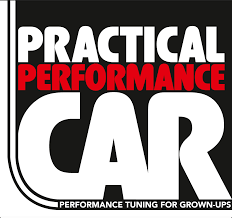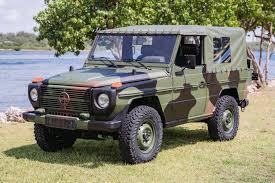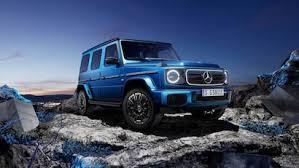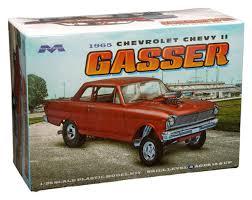-
Posts
39,079 -
Joined
-
Last visited
Content Type
Profiles
Forums
Events
Gallery
Everything posted by Ace-Garageguy
-
Time to drag my old tired bones out the door and down the road, so I'll say bye for now.
-

A merlin powered sleeper (ish)
Ace-Garageguy replied to stitchdup's topic in General Automotive Talk (Trucks and Cars)
Pretty cool, no doubt. But one does have to wonder a little about where the "practical" part comes in. -
Patience is often required of healthcare people when dealing with elderly confused and anxious or younger panicky patients.
-
That was pretty much me today, too, but I did finally drag myself out to do a few errands.
-
Harrison probably knew what a sentence was, and the difference between a sentence and a descriptive phrase.
-
Still no shortage of chimps in the car biz. Fixing their messes has kept me busy for 5 decades. How many times a client has told me "there's nothing wrong with it; it's been in 5 shops, they fixed everything, but it just won't run". So waddya expect ME to do? Call in a priest and have him drive out the demons? And then after I correct every single thing the other guys did WRONG, and the car starts and runs like new, the owner balks at the bill because "I told you there was nothing wrong with it; it just wouldn't run".
-
Sign of idiocy be like...oops, I better not go there, 'cause Googli admonishes me that intelligence and cognitive abilities exist on a spectrum, and there's a wide range of human neurodiversity, so it's apparently no longer possible to just be a stupid fool.
-
I had been giving my local PO pretty high marks of late, but the last order I got from feePay, the Emhar Bedford wrecker, was left on top of the mailbox, in the rain, where anyone passing could have grabbed it in a second, literally. How this is even possible is entirely beyond my ability to understand. Complaint and photos going to the postmaster's website, and I'm going to the local PO in the morning. Just as well that I've pretty much curtailed online personal shopping, and have parts and materials for work delivered to the shops...but I got stuck paying twice for a $200 order delivered wrong there too, until I could prove to the vendor's satisfaction that the 'delivery photo' submitted by the UPS driver was not our building, or even on the same street. To quote another poster on the board earlier...
-
Right now, it would appear that at least half the inhabitants of every village (with internet access) are idiots.
-
Common sense is in short supply today, as is general knowledge. I could elaborate, but I'd be banned. HOWEVER...time was originally structured as local "sun time", because it was in step with a human being's natural circadian rhythm. Before standardized time, most towns and cities set their clocks based on local solar time, where "high noon" was when the sun was at its highest point in the sky. This system worked well when travel and communication were slow, so the slight differences between nearby towns didn't matter. BUT...as societies grew and spread and commercialized and industrialized, this "sun time" was later replaced by standardized time arranged in zones, especially for coordination of things like the train system, where "sun time" wasn't the same in every adjoining area BECAUSE THE SUN MOVES ACROSS THE SKY ALL DAY LONG. "Sun time" is fairly close to the "standard time" in every time zone, but depending on how far east or west you are in each zone, it can be pretty far off. "Daylight saving time" further disrupts clock-time's relationship to natural circadian rhythms. The disruption of this natural rhythm by artificial light and modern schedules has been shown by repeatable and verifiable research to negatively impact health. One such study, of many: https://med.stanford.edu/news/all-news/2025/09/daylight-saving-time.html#:~:text=An out-of-sync circadian,cycles closer to 24 hours. And please note: farmers have been "up before the sun" since the dawn of civilization (pun intended).
-
Here's a 6X8 inch sheet of self-adhesive stickers too... https://www.ebay.com/itm/264410564189
-
https://www.ebay.com/itm/187614986355
-
https://www.ebay.com/itm/186749380658? Scratch-building the frame should be very straightforward.
-
Mercedes G-class. Originally a light military vehicle, it's morphed into a luxo status symbol, kinda like Land Rover. https://www.motortrend.com/vehicle-genres/mercedes-g-wagen-g-class-history-generations-specifications-photos
-
Bought a buncha stuff from Replicas and Miniatures at the ACME show, way too much to list. Filled out several missing slots in my MCG stash too, including another 1/8 '32 Ford grille insert to replace one that may be lost and gone forever. Also, cheap at the show... And this Emhar Bedford OSB wrecker came in this week too. Gees, what a beautiful kit. I had all of the Emhar Bedford trucks at one time, but they may all be gone as well.
- 39,060 replies
-
- 6
-

-
- johan
- glue bombs
-
(and 1 more)
Tagged with:
-
"Upon my honor" has no meaning to some.
-

Thoughts and ideas that hold forever true..........
Ace-Garageguy replied to JollySipper's topic in The Off-Topic Lounge
But what's Bezos really achieved? Yeah, he's leveraged the internet into becoming a global master of buy low, sell high...predominantly trading in Chinese garbage...while he pays his people as little as they'll stand for. So what? He has a third-rate independent 'space program' that's, frankly, a joke. He has a hellishly expensive trophy wife who used to be a pretty girl, but is now so artificially inflated and botoxed she's unrecognizable. He's a hypocrite of the first order, calling carbon-emission-driven "global warming" the "biggest threat to our planet", but his company's carbon footprint is the size of a small country's, and just his personal private jets dump as much carbon into the atmosphere annually as several normal human lifetime emissions combined. Whenever I hear Alan Parsons I Wouldn't Want to be Like You, the first person that pops into my mind is invariably Bezos. It's not sour grapes on my part, either. I don't mind at all seeing people who have vastly more wealth than I can even imagine. But I wouldn't throw a bucket of liquid horse exhaust on Bezos if he was on fire. -
I ran this through Googli's AI "Good luck is 95% being in the right place at the right time, by working hard to get there." And that PC excuse-making gibberish is what it vomited up.
-
"Submitting" is another of those words that has a coupla meanings, but they're both spllelleded the same.
-
Only thing irking me today is me...
-

Thoughts and ideas that hold forever true..........
Ace-Garageguy replied to JollySipper's topic in The Off-Topic Lounge
I respectfully disagree. I've always loved my work, probably because I chose to work at things I loved. I loved working as an apprentice photographer and as a draftsman when I was in school. I loved the work in my early days as a fledgling engineer in the white-collar world...but as I became more and more convinced that the 'workday' was taken up by most of my coworkers attending endless meetings and playing CYA and suckup, I left to work on cars as a dealership apprentice. There I also loved the actual work, but politics were in evidence that always soured everything in most of the shops I ever worked as non-owner.. It wasn't until I started working on Euro sports and race cars and aircraft that I got to the point I could say I loved most of it, because the work was so challenging and satisfying, almost always way out of the box, but I did, and still do for the most part. There are aspects of my work I despise, but there's still nothing like looking at something I've made, especially after some time has passed, and thinking to myself "damb man...that's as good as anything I've ever seen from anyone; did I actually DO that?". -

Thoughts and ideas that hold forever true..........
Ace-Garageguy replied to JollySipper's topic in The Off-Topic Lounge
“Once men turned their thinking over to machines in the hope that this would set them free. But that only permitted other men with machines to enslave them.” ― Frank Herbert, Dune










